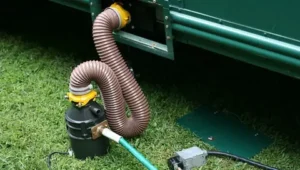When it comes to maintaining a functional and reliable residential plumbing system, understanding how sewer pumps and sewer lines work is essential. The sewer line, a crucial component of the plumbing system, is responsible for carrying wastewater from your home to the municipal sewer or septic tank. If your home is located in an area with low-lying terrain, sewer pumps become even more vital to ensure that wastewater flows correctly from your home to the sewer system. This blog aims to give you a deeper understanding of these vital systems and their role in maintaining a healthy home.

What Are Sewer Lines?
Sewer lines are the underground pipes that transport wastewater away from your home to the sewage treatment facility or septic tank. These pipes are typically made from durable materials such as PVC, clay, or cast iron, designed to withstand the test of time. The sewer line is part of the larger plumbing network that connects various waste sources like toilets, sinks, and showers to the sewage system.
In most homes, sewer lines are installed with a slight slope to help wastewater flow naturally due to gravity. The size of the sewer pipe is large enough to accommodate the wastewater generated by the household, including stormwater runoff if applicable. A well-maintained sewer line is crucial to ensure proper drainage, avoid unpleasant odors, and prevent serious plumbing problems, such as clogs and backups.
What Are Sewer Pumps?
While gravity is typically enough to ensure the proper flow of wastewater, certain homes, particularly those built on lower ground, may require the assistance of sewer pumps. Sewer pumps are designed to pump wastewater from your home’s sewer lines to the main sewer line, which may be located uphill or in a distant location. These pumps help to push wastewater through the system when gravity alone is not sufficient.
Sewer pumps are typically used when a home is located in a low-lying area, where gravity cannot effectively direct wastewater into the sewer system. A typical sewer pump is installed in a sump basin where the waste gathers. When the water level rises to a certain point, the pump automatically activates, pushing the wastewater up to the main sewer line. This ensures that wastewater continues to flow even if the natural slope of the land does not support proper drainage.
Common Sewer Line Issues
Over time, sewer lines can develop issues that affect their performance. Some of the most common problems homeowners face with sewer lines include:
- Clogs and Blockages: The buildup of grease, hair, soap scum, and other debris can lead to blockages within the sewer line. Over time, these blockages can result in slow drainage or even sewage backups.
- Tree Root Intrusion: Tree roots can infiltrate sewer lines, seeking out moisture. As roots grow, they can crack or collapse sewer lines, leading to leaks, clogs, or a complete blockage.
- Corrosion and Wear: Older homes with metal or clay sewer lines may face issues with rust or deterioration. Over time, corrosion can weaken the pipes, leading to cracks or complete pipe failure.
- Leaking or Broken Sewer Lines: If your sewer line is leaking, it can contaminate the surrounding soil and groundwater. Broken lines can cause significant damage to your property and lead to costly repairs.
Maintaining Your Sewer System
Proper maintenance of your sewer lines and sewer pumps is crucial to prevent costly repairs and ensure the smooth operation of your plumbing system. Here are a few maintenance tips:
- Regular Inspections: Have a professional plumber inspect your sewer lines regularly. They can check for signs of damage, clogs, or wear that might lead to bigger issues.
- Prevent Clogs: Be mindful of what goes down the drain. Avoid flushing large amounts of toilet paper, grease, or non-flushable items that can cause clogs in your sewer lines.
- Use Enzyme Cleaners: Regular use of enzyme-based cleaners can help break down waste and prevent blockages in your sewer lines.
- Check Sewer Pumps: If your home has a sewer pump, have it inspected periodically to ensure it is working efficiently. Pumps that are not properly maintained can fail, leading to wastewater backups.
Conclusion
Understanding the role of sewer pumps and sewer lines in your home’s plumbing system is crucial for maintaining a healthy and functional home. Regular maintenance and prompt attention to any issues that arise can save you from costly repairs and potential property damage. Ensure that your sewer lines and pumps are in good working condition, and consider consulting a professional plumber for inspections and repairs when necessary.
Frequently Asked Questions
- How often should I have my sewer lines inspected?
It’s recommended to have your sewer lines inspected every 1-2 years to detect any potential issues early. - What should I do if I experience a sewer backup in my home?
If you experience a sewer backup, avoid using water fixtures, as this can worsen the problem. Call a professional plumber immediately to address the issue. - Can tree roots damage my sewer lines?
Yes, tree roots can infiltrate sewer lines and cause cracks, clogs, and blockages. It’s important to regularly check for tree root intrusion. - How long do sewer pumps typically last?
Sewer pumps generally last around 7-10 years, depending on maintenance and usage. Regular checks can extend their lifespan. - What can I do to prevent sewer line clogs?
Avoid flushing non-flushable items down the toilet and refrain from pouring grease or food waste down the drain.


